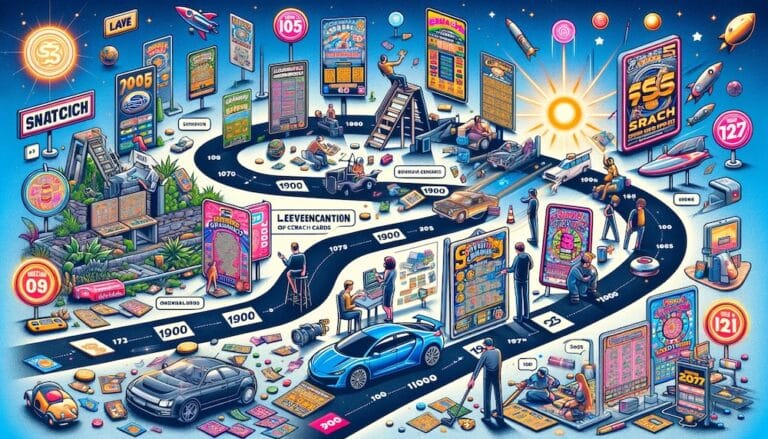Scratch cards, those small pieces of cardstock bearing a thin layer of latex concealing symbols or numbers, represent one of the most straightforward and engaging forms of lottery. This article traces the fascinating journey of scratch cards from their inception to their current status as a global phenomenon, highlighting key developments along the way.
The Birth of Scratch Cards
The history of scratch cards dates back to the early 1970s, a period marked by innovation and the quest for more interactive forms of gaming. The first scratch card is credited to the Scientific Games Corporation, spearheaded by American computer scientists John Koza and retail promotions specialist Daniel Bower in 1974. They ingeniously combined computer-generated randomness with the simple, immediate gratification of scratching off a coating to reveal a potential prize. This blend of technology and entertainment created a new lottery genre.
Early Adoption and Evolution
Initially, scratch cards were a novelty, primarily used for promotional purposes or as a fundraising tool. However, their potential for generating revenue quickly became apparent. The first mass-produced scratch cards were adopted by state lotteries to offer instant wins, supplementing traditional lottery draws. This move dramatically increased their popularity and cemented their place in the lottery industry.
The 1980s and 1990s saw significant advancements in printing and computer technology, enabling more complex games with better security features and more attractive designs. Themes expanded from simple numbers and symbols to include games based on popular culture, sports, and holidays, broadening their appeal.
Global Expansion
By the turn of the millennium, scratch cards had become a staple of national lotteries worldwide. The advent of the internet further transformed the scratch card industry, introducing online scratch cards. These digital versions replicated the excitement of physical scratch cards without the need for physical distribution, reaching a wider audience than ever before.
Technological Innovations and the Future
Today, scratch cards are available in a plethora of styles, from traditional cardboard cards to digital versions playable on smartphones and tablets. Modern technology has also enhanced the security of scratch cards, incorporating features like microprinting and holograms to combat counterfeiting. As technology advances, so too does the potential for more innovative and engaging scratch card games, promising a bright future for this beloved form of lottery.
The Cultural Impact of Scratch Cards
Scratch cards have made a significant cultural impact, symbolizing the democratization of gambling. They are accessible to a broad demographic, offering a low-cost form of entertainment with the chance of instant rewards. Their simplicity and the immediate gratification they offer have made them a popular pastime, transcending socioeconomic barriers.
Conclusion
From their humble beginnings in the 1970s to their position as a global gaming phenomenon, scratch cards have undergone a remarkable evolution. They have adapted to changing technologies and consumer demands, ensuring their lasting appeal. As we look to the future, the history of scratch cards reminds us of the enduring allure of simplicity and the dream of instant fortune.

Garry Sputnim is a seasoned journalist and storyteller with over a decade of experience in the trenches of global news. With a keen eye for uncovering stories that resonate, Alex has reported from over 30 countries, bringing light to untold narratives and the human faces behind the headlines. Specializing in investigative journalism, Garry has a knack for technology and social justice issues, weaving compelling narratives that bridge tech and humanity. Outside the newsroom, Garry is an avid rock climber and podcast host, exploring stories of resilience and innovation.


